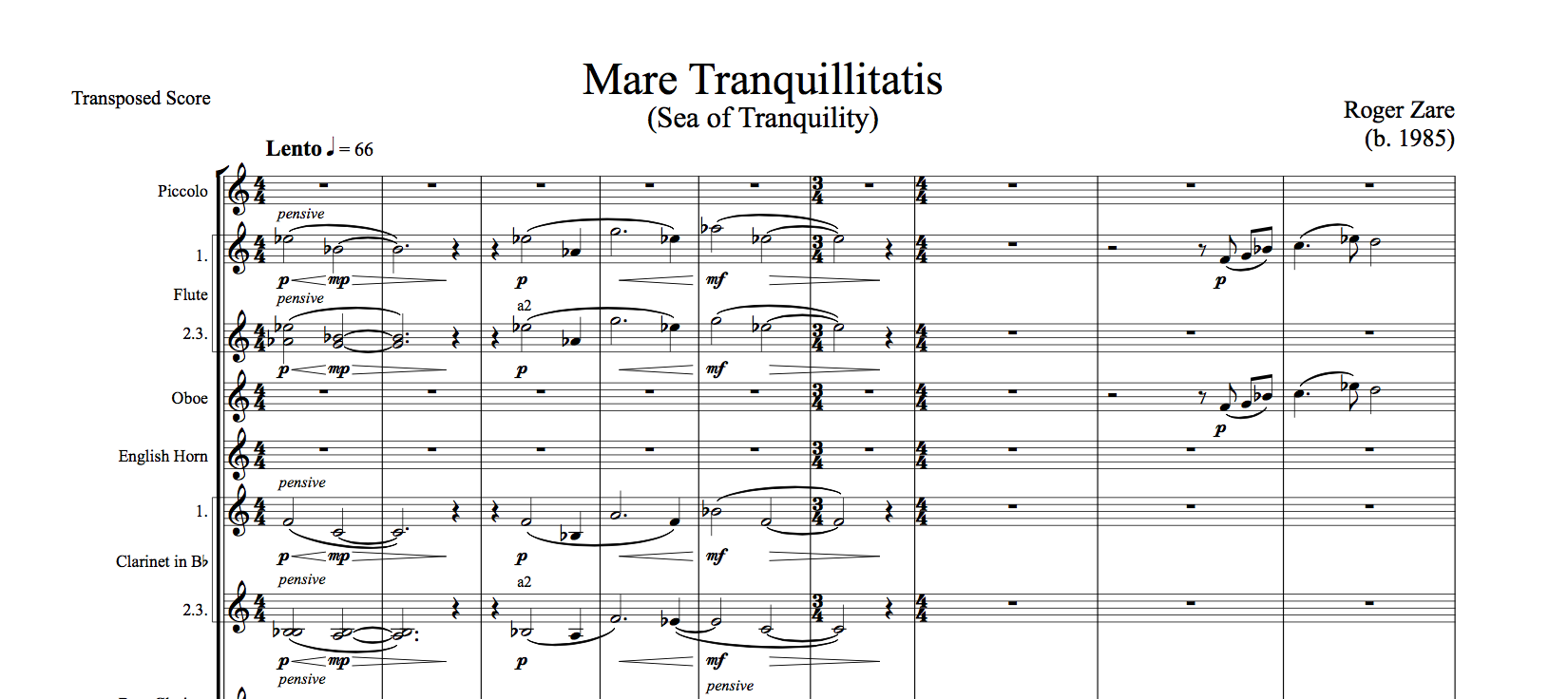Mare Tranquillitatis: Program Note
Roger Zare – Born 1985 in Sarasota, Florida
Mare Tranquillitatis, or Sea of Tranquility, is a lunar plain that sits within the Tranquillitatis basin on Earth’s only moon. The mare material within the basin consists of volcanic rocks formed over 3.9 billion years ago. Known for its irregular topography and stunningly beautiful bluish tint, the region consists of a variety of irregular margins and slopes. Apollo 11 and man’s first lunar steps took place on Mare Tranquillitatis, making it one of the most closely studied areas throughout astronomy.
Roger Zare has been praised for his “enviable grasp of orchestration” (New York Times) and for writing music with “formal clarity and an alluringly mercurial surface.” He was born in Sarasota, Florida, and has written compositions for virtually all mediums. Inspiration for his work includes the sciences, mathematics, literature, and mythology. Mare Tranquillitatis is no exception. The work was first commissioned by Jeffrey Bishop of the Shawnee Mission Northwest High School Orchestra. H. Robert Reynolds, one of the most well respected living wind conductors today, assembled a consortium of 29 universities to fund a wind transcription. This wind transcription is Zare’s most frequently performed work today.
Mare Tranquillitatis seeks to capture a dichotomy of emotions – tranquil beauty and restless isolation – via utilizing musical material from two fragments – the descending fourth interval heard in the first two notes of the piece, and the flowing melody presented after the initial woodwind chorale. These two fragments ebb and flow mirroring Mare Tranquillitatis’s topography; the music recedes into a quieter realm as solo woodwinds appear at the forefront of the musical landscape. As the ensemble builds to one final climax, a short epilogue is presented, as the solo oboe sings the final two pitches from the melody.
Program Note by Tyler Ehrlich with information from the NASA mission database and the composer’s website.
Let me know if you use the above note! Email me here. (A citation would be great too!)

